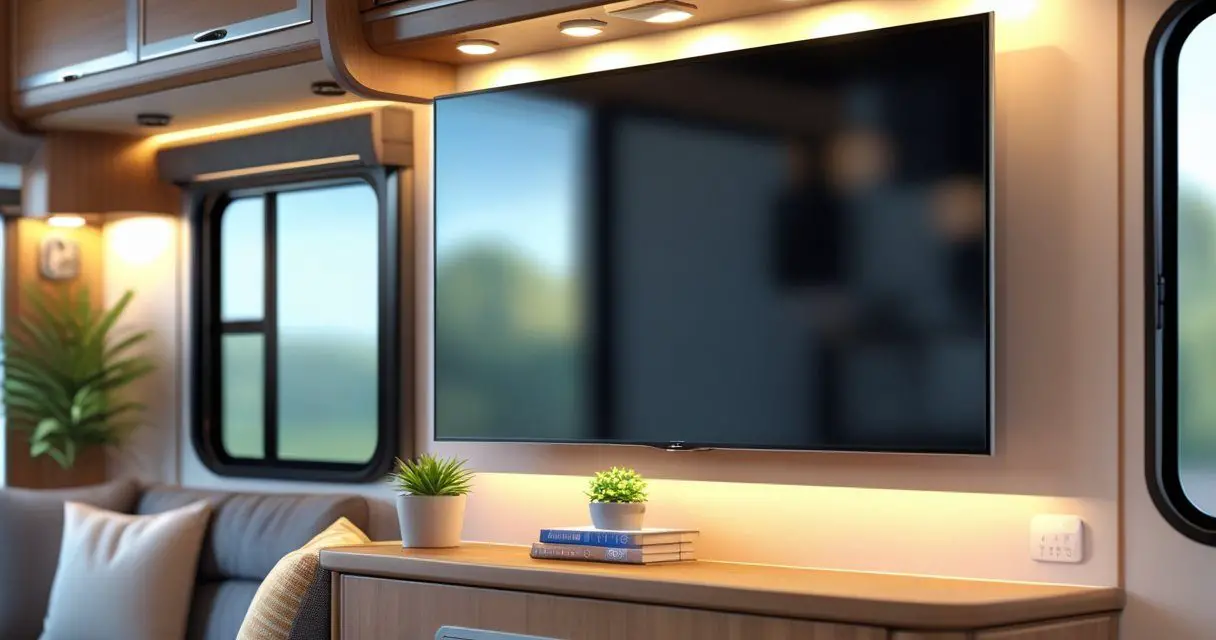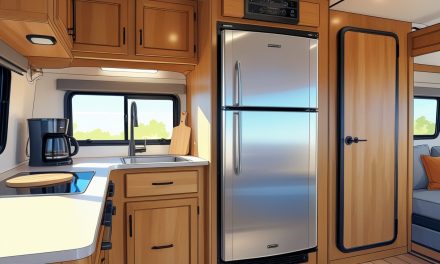Would you like to save this article?
Ever looked at your RV’s wall and wondered, “Is this thing really strong enough to hold a TV?” You’re not alone—many RV owners second-guess whether their walls are up to the task of supporting a modern flat-screen. The truth is, RV walls are built for lightness and mobility, not for brute strength like a house. But don’t let that scare you off: with the right approach, you absolutely can hang a TV in your RV! In fact, thousands of RVers have done it successfully, and with a few smart tricks, you can too. Let’s break down the surprising reality of RV wall strength and what it means for your home entertainment dreams.
1. How Strong Are RV Walls, Really?
RV walls are designed to be lightweight for fuel efficiency and easier towing, but that doesn’t mean they’re flimsy. Most RV walls are constructed with thin plywood or fiberglass panels over a metal or wooden frame, with insulation sandwiched in between. The actual weight capacity depends on how well the mount is anchored—straight into a single thin panel? Not ideal.
But if you hit a stud or use a backer board, the strength improves dramatically. Some RVs have “TV mounting bracket location” stickers, which indicate reinforced spots specifically meant for this purpose. Always check your owner’s manual for specific recommendations.
If your RV wall could talk, it would probably say, “I’m strong, but I’m not Hulk strong—so please don’t test me with a 65-inch plasma!”
2. What Type of TV Mount Works Best in an RV?
Not all TV mounts are created equal—especially for RVs. Fixed mounts are the simplest and most secure, while tilting and full-motion mounts offer flexibility but require extra attention to stability. Full-motion mounts are great for adjusting viewing angles, but make sure they have a locking mechanism so your TV doesn’t swing around while driving. Many RV-specific mounts are made from high-grade steel or aluminum for extra durability. Always check the weight rating and VESA compatibility to ensure a safe fit for your TV.
Choosing a mount is like picking a dance partner—you want someone who can move, but not so much they step on your toes (or drop your TV).
3. How to Find the Best Spot to Mount Your TV
Location, location, location—this isn’t just a real estate mantra! In RVs, you want to mount your TV where there’s good support, easy access to power, and minimal risk of hitting wires or plumbing. Use a stud finder or the “tap method” to locate framing behind the wall. Look for reinforced areas marked by the manufacturer or visible stickers. Avoid mounting above cabinets or in areas where the wall feels hollow. Make sure your chosen spot is near an outlet for easy power access.
If you pick the wrong spot, your TV might end up with a better view of the floor than you do.
4. The Secret Weapon: Backer Boards and Reinforcement
If your RV wall feels too thin or weak, don’t panic—backer boards are your best friend. Adding a piece of plywood (10″ x 12″ or larger) behind the mount distributes the weight and gives you more surface area to screw into. Use short screws to attach the plywood to the wall, then mount your TV bracket to the plywood.
This trick is especially useful for exterior or slide-out walls, which are often thinner than interior ones. Many RVers swear by this method for mounting larger TVs.
With a backer board, your RV wall goes from “meh” to “mighty” in just a few screws.
5. What About Ceiling and Other Mounting Options?
Wall mounts aren’t your only choice—ceiling mounts can save valuable wall space and offer unique viewing angles. However, ceiling mounting requires even more planning, as RV ceilings are often even thinner and less reinforced than walls.
Always check for structural support before drilling into the ceiling. Some RVers use floor stands or even repurpose overhead bunks for TV placement. Each option has pros and cons, so choose based on your space and needs.
Ceiling mounts make you feel like you’re in a spaceship—just don’t expect your RV to actually fly.
6. How to Avoid Common Installation Mistakes
One of the biggest mistakes is using screws that are too long, which can puncture wiring or plumbing hidden behind the wall. Always measure your wall thickness before choosing hardware.
Another common error is not checking for reinforced areas or ignoring manufacturer recommendations. Don’t forget to test your mount’s stability before attaching the TV, especially if it’s a swivel or articulating model. Always have a partner help with the heavy lifting to avoid accidents.
If you don’t measure twice and drill once, your RV might end up with a new “feature”—a surprise shower or light show.
7. The Bottom Line: Yes, You Can Hang a TV in Your RV!
With the right tools, techniques, and a little patience, hanging a TV in your RV is not only possible but also safe and practical. Thousands of RV owners have done it, and you can too—just follow the manufacturer’s guidelines and use reinforcement where needed. Always double-check for weight limits and recommended mounting locations. If you’re ever unsure, consult your RV manual or reach out to the manufacturer for advice.
If all else fails, just duct tape your TV to the wall—just kidding, please don’t do that!






